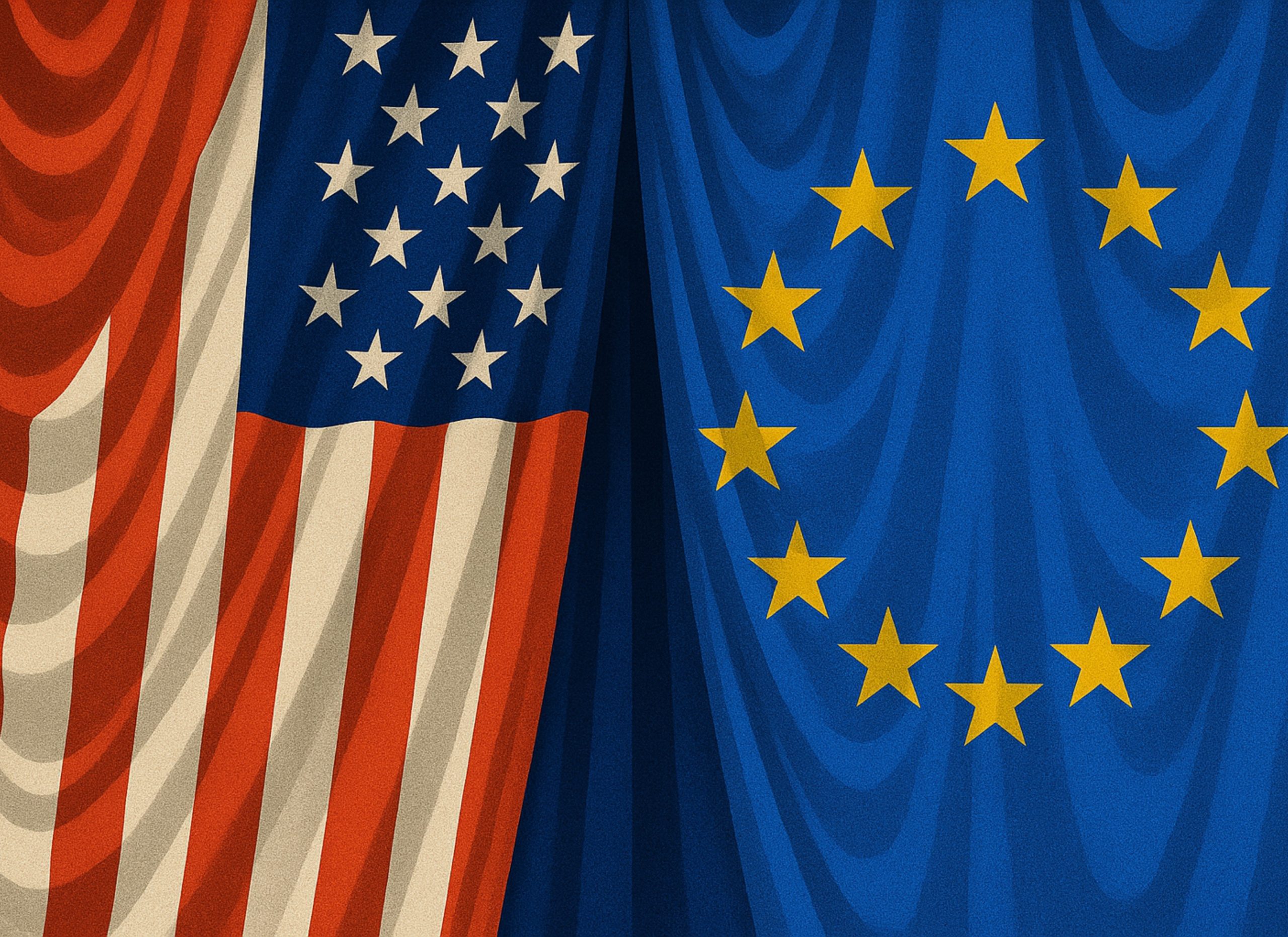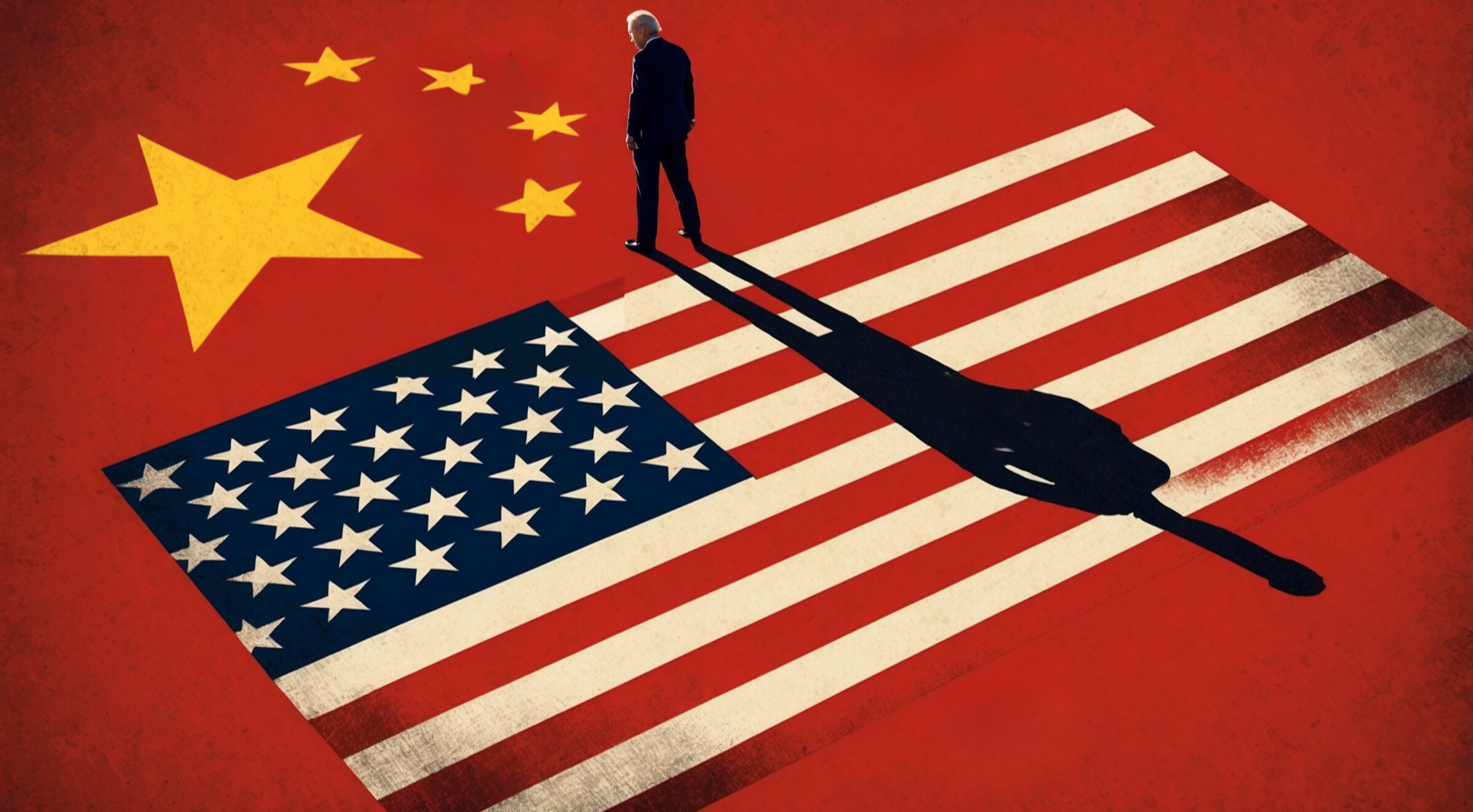









Endorsing a robust U.S. strategy, Biden focuses on strengthening alliances, fostering innovation, and enhancing global leadership, setting a comprehensive approach to address the challenges and opportunities posed by China’s rise.
AUGUST 08, 2024

With President Biden recently announcing his withdrawal from the presidential race and endorsing Vice President Kamala Harris, the focus now shifts to the enduring legacy of his administration’s foreign policy, particularly its nuanced approach toward China. The Biden administration’s foreign policy is shaped by recognizing the United States as an Indo-Pacific power with a vital interest in an open, interconnected, prosperous, secure, and resilient region. Central to this vision is the U.S. strategy towards China, a key player whose rise as a global power poses opportunities and challenges.
In this context, the Biden administration has underscored investment in domestic strengths, alignment with allies, and strategic competition with China. This paper examines the Biden administration’s multifaceted strategy towards China, highlighting its political, economic, and military dimensions and contrasting it with the previous administration’s approach. Understanding the historical context of U.S.-China relations provides crucial insights into the current dynamics and the significance of Biden’s strategy.
The United States has maintained a significant interest in Asia for over a century, intensifying its focus after World War II. The contemporary challenge concerns responding to China’s rise as a global power. In 1949, the establishment of Mao Zedong’s Communist government in China prompted the U.S. to establish alliances in Asia to contain communism, leading to involvement in the Vietnam War, driven by the domino theory. The war ended in a communist victory, prompting significant introspection about U.S. foreign policy.
A pivotal moment in U.S.-China relations came in 1972 when President Richard Nixon visited China, initiating a thaw in relations aimed at exploiting the Sino-Soviet split and isolating North Vietnam. The formal recognition of Beijing in 1979 under President Jimmy Carter marked a significant shift, ushering in an era of cooperation. China’s accession to the World Trade Organization (WTO) in 2001 was initially seen as a potential catalyst for democratic reforms. However, rather than liberalizing, China used its economic growth to reinforce its authoritarian regime.
The U.S. policy towards Taiwan has been intentionally ambiguous since 1979, maintaining unofficial ties and selling arms to Taiwan while avoiding clear commitments to defend it militarily. This delicate balance has been a cornerstone of managing relations with Taiwan and mainland China. The rise of China presents a fundamental challenge to the U.S.-led liberal world order. While past U.S. administrations sought to integrate China into international institutions, recent policies have increasingly viewed China as a strategic competitor, evidenced by tariffs and a tougher stance on issues like human rights and the South China Sea. Addressing China’s rise remains one of the twenty-first century’s most critical U.S. foreign policy challenges.
Biden’s political strategy towards China focuses on reinvigorating U.S. alliances and partnerships to counterbalance China’s influence. The administration has strongly emphasized multilateralism, contrasting with Trump’s “America First” approach. By reasserting American leadership in global forums and strengthening alliances such as the NATO and partnerships in the Indo-Pacific, Biden aims to present a united front against China’s regional and global ambitions. The alignment with allies is crucial, as evidenced by initiatives like the QUAD, which includes the United States, Japan, India, and Australia, focusing on maritime security, economic cooperation, and regional stability. The QUAD’s joint naval exercises and infrastructure initiatives in the Indo-Pacific are tangible steps towards counterbalancing China’s influence.
Economically, Biden’s strategy involves both competition and cooperation with China. The administration has maintained some of Trump’s tariffs but seeks to engage China through multilateral trade agreements and institutions. The emphasis on investing in domestic innovation, technology, and infrastructure aims to bolster U.S. competitiveness. The CHIPS Act, aimed at boosting domestic semiconductor manufacturing, exemplifies the administration’s commitment to maintaining technological leadership. This includes significant investments in high-tech industries and future-oriented sectors to ensure the U.S. remains at the forefront of technological advancements. The administration also seeks to address China’s predatory economic practices through coordinated efforts with major trading partners, reinforcing the rules-based international order.
On the military front, Biden’s strategy focuses on strengthening U.S. defense capabilities and enhancing security cooperation with allies in the Indo-Pacific. A significant initiative is AUKUS, a strategic partnership established in 2021 among Australia, the United Kingdom, and the United States. This partnership aims to bolster allied defense capabilities and counter China’s influence through two main pillars. AUKUS facilitates Australia’s acquisition of conventionally armed nuclear-powered submarines, significantly enhancing its undersea warfare capabilities. The U.S. plans to sell 3-5 Virginia class SSNs to Australia by the early 2030s, with the U.S. and the U.K. deploying their nuclear-powered submarines in the region as early as 2027. This move underscores a robust military deterrence against China’s assertiveness. AUKUS also focuses on collaboration in advanced technologies, including AI, quantum technology, hypersonics, and cyber capabilities. This partnership enhances technological innovation and interoperability among allies, addressing the strategic competition with China. Early successes include trials for AI-enabled assets, highlighting the Biden administration’s commitment to accelerating defense innovation and strengthening alliances.

A Stark Contrast Biden often says, “Compare me to the alternative,” highlighting significant differences from former President Donald Trump. Donald Trump’s aggressive trade strategy with China was marked by high tariffs and a “phase-one” trade deal in January 2020, which aimed to increase China’s imports of American goods to $159 billion in 2020, up from $78 billion in 2019. However, China fell short of this target, spending only $94 billion on American goods in 2020, about the same as in 2017 before the trade war began. Manufacturers, making up 70% of the goods covered, saw a shortfall, with U.S. sales reaching only $57 billion of the intended $99 billion, a 5% drop from the previous year. Energy shipments reached just $10 billion of the targeted $26 billion, and farm exports fell short at $27 billion of the pledged $33 billion. The tariffs led to significant economic costs, with U.S. companies losing nearly $46 billion, and the overall trade war is estimated to cost the U.S. economy $316 billion by the end of 2020.
The trade war diverted trade flows, increased the U.S. goods trade deficit with China to a record $419.2 billion in 2018, and caused U.S. trade deficits with other countries to rise as well. Despite the economic pain, the phase-one deal failed to address structural issues like subsidies and state-owned enterprises and did not result in major reforms. A second Trump term could embolden authoritarianism, weaken NATO, and strain U.S.-China relations, particularly over Taiwan. Domestically, it might further erode American democracy, aligning with global autocratic trends. In a volatile world needing cooperation on issues like climate change and AI, Trump’s “America First” stance poses significant risks.
Vice President Kamala Harris, recognized for her rise and political presence, is set to build on Biden’s China strategy. Having served as San Francisco district attorney, California attorney general, U.S. senator, and now vice president, Harris focuses on pragmatic solutions rather than ideological missions. She has advocated for robust cybersecurity measures, supported democratic institutions, and emphasized practical policies like lowering medication costs and expanding broadband access. Harris’s incremental approach, coupled with her focus on immediate, impactful changes, positions her to effectively continue and expand Biden’s initiatives, reinforcing alliances and maintaining U.S. influence in the Indo-Pacific.
In sum, the Biden administration’s strategy towards China is a comprehensive approach that combines political, economic, and military dimensions to maintain U.S. leadership and influence in the Indo-Pacific. By investing in domestic strengths, reinforcing alliances, and engaging in strategic competition, the U.S. aims to address the challenges posed by China’s rise. As Vice President Kamala Harris steps up to run against Trump, her pragmatic and incremental approach will ensure the continuation and expansion of these policies if she wins, reinforcing U.S. values and global leadership. This strategy underscores the importance of unity and resilience in navigating one of our time’s most critical foreign policy challenges.
A curated seletion of FA’s must-read stories.
Written By: SeungHawn Kim
Written By: Rizwan Rafi Togoo
Written By: Marco Mendez
Written By: Krishna Achnaf Herindra
Written By: Billy Agwanda
Written By: Suruthi Lenin
Written By: Berk Tuttup
Written By: Alexander Bergh

William Cano is pursuing a Master of Arts in International Affairs at American University’s School of International Service, specializing in Global Governance, Politics, and Security. He served in the United States Army for nearly six years, gaining leadership and operational experience.
Written By: BATUHAN GUNES
Written By: KRISTIN HYNES
Written By: ERIC SONG
Written By: ALEXANDER BERGH
Written By: KATE-REID SMITH
Written By: JOSEF SCHOEFL
Written By: PATRIC MCFARLAND
Written By: FATIH CEYLAN
FA’s flagship evening newsletter guilding you through the most important world streis ofthe day. Delivered weekdays.
